Related Research Articles
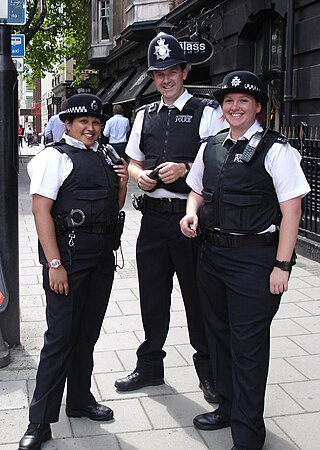
Law enforcement in the United Kingdom is organised separately in each of the legal systems of the United Kingdom: England and Wales, Scotland, and Northern Ireland. Most law enforcement duties are carried out by police constables of a territorial police force.

Toxteth is an inner-city area of Liverpool in the county of Merseyside.
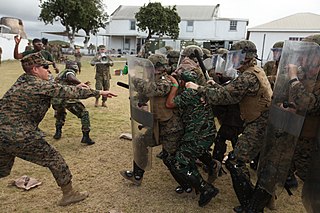
Riot control measures are used by law enforcement, military, paramilitary or security forces to control, disperse, and arrest people who are involved in a riot, unlawful demonstration or unlawful protest.

Avon and Somerset Police is the territorial police force responsible for law enforcement in the five unitary authority areas of Bristol, Bath and North East Somerset, North Somerset, Somerset, and South Gloucestershire, all in South West England.

The 1981 Brixton riot, or Brixton uprising, was a series of clashes between mainly black youths and the Metropolitan Police in Brixton, London, between 10 and 12 April 1981. It resulted from racist discrimination against the black community by the mainly white police, especially the police's increased use of stop-and-search in the area, and ongoing tensions resulting from the deaths of 13 black teenagers and young adults in the suspicious New Cross house fire that January. The main riot on 11 April, dubbed "Bloody Saturday" by Time magazine, resulted in 279 injuries to police and 45 injuries to members of the public; over a hundred vehicles were burned, including 56 police vehicles; almost 150 buildings were damaged, thirty of which were burnt out, and many shops were looted. There were 82 arrests. Reports suggested that up to 5,000 people were involved. The Brixton riot was followed by similar riots in July in many other English cities and towns. The Thatcher government commissioned an inquiry, which resulted in the Scarman Report.
Sir Cyril James Anderton was a British police officer who served as chief constable of Greater Manchester from 1976 to 1991.

Merseyside Police is the territorial police force responsible for policing Merseyside in North West England. The service area is 647 square kilometres with a population of around 1.5 million. As of September 2017 the service has 3,484 police officers, 1,619 police staff, 253 police community support officers, 155 designated officers and 208 special constables. The force is led by Chief Constable Serena Kennedy.
The Territorial Support Group (TSG) is a Met Operations unit of London's Metropolitan Police Service (MPS) which specialises in public order policing, amongst other specialist areas. In 2012 it consisted of 793 officers and 29 support staff. The TSG is a uniformed unit of the MPS that replaced the similarly constituted Special Patrol Group in 1987. TSG units patrol the streets of London in marked police vans or "carriers"; using the call sign prefix "Uniform". Generally each carrier has an advanced (police) driver, six constables, and a sergeant. Territorial Support Groups often comprise three carriers, twenty one constables, and three sergeants reporting to an Inspector. They separately patrol designated areas experiencing serious levels of gang violence or disorder. When deployed, it is by the MPS Information Room. Due to the public order nature of their role, numerous carriers will often be assigned. TSG officers can be identified as TSG from the distinctive "U" in their shoulder numbers. Some TSG officers are also plainclothes officers, carrying a taser and handcuffs.

The Broadwater Farm riot occurred on the Broadwater council estate in Tottenham, North London, on 6 October 1985.
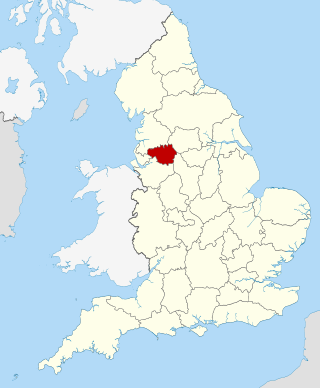
Greater Manchester Police (GMP) is the territorial police force responsible for law enforcement within the metropolitan county of Greater Manchester in North West England.
The Scarman report was commissioned by the UK Government following the 1981 Brixton riots. Lord Scarman was appointed by then Home Secretary William Whitelaw on 14 April 1981 to hold the enquiry into the riots. The Scarman report was published on 25 November 1981.
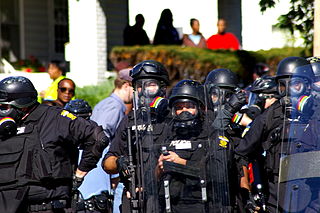
The 2005 Toledo riot, on October 15, 2005, occurred when the National Socialist Movement (NSM), a neo-Nazi organization, planned a march to protest African-American gang activity in the North End of Toledo, in the U.S. state of Ohio. The appearance of the group sparked a four-hour riot by elements within the assembled protesters, and caused a citywide curfew to be implemented for the remainder of the weekend.

Lancashire Constabulary is the territorial police force responsible for policing the ceremonial county of Lancashire in North West England. The force's headquarters are at Hutton, near the city of Preston. As of September 2020, the force has 3,088 police officers, 190 special constables, and 280 police community support officers (PCSO), 300 police support volunteers (PSV), and 2,287 staff.
The Toxteth riots of July 1981 were a civil disturbance in Toxteth, inner-city Liverpool, which arose in part from long-standing tensions between the local police and the black community. They followed the Brixton riot earlier that year and were part of the 1981 England riots.

The custodian helmet is a type of helmet worn predominantly by male police officers in the United Kingdom and within certain other places around the world. First used by the Metropolitan Police in London in 1863, the BBC labelled the custodian helmet a "symbol of British law enforcement". They are worn by male constables and sergeants on foot patrol. A cultural icon, it has featured in films, TV series and other media involving British police.
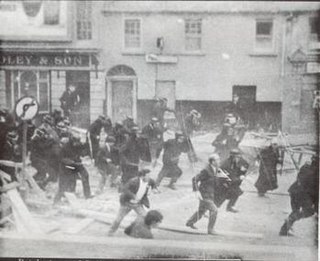
During 12–16 August 1969, there was an outbreak of political and sectarian violence throughout Northern Ireland, which is often seen as the beginning of the thirty-year conflict known as the Troubles. There had been sporadic violence throughout the year arising out of the Northern Ireland civil rights campaign, which demanded an end to discrimination against Catholics and Irish nationalists. Civil rights marches had been attacked by Protestant loyalists, and protesters often clashed with the Royal Ulster Constabulary (RUC), the overwhelmingly Protestant police force.
Sir Kenneth Gordon Oxford was a senior British police officer and chief constable of Merseyside Police from 1976 to 1989.
In April and July 1981, there were riots in several cities and towns in England. The riots mainly involved black English youth clashing with police. They were caused by tension between black people and the police, especially perceived racist discrimination against black people through increased use of stop-and-search, and were also fuelled by inner-city deprivation. The most serious riots were the April Brixton riots in London, followed in July by the Toxteth riots in Liverpool, the Handsworth riots in Birmingham, the Chapeltown riots in Leeds, and the Moss Side riots in Manchester. There were also a series of less serious riots in other towns and cities. As a result of the riots, the government commissioned the Scarman Report.

In early August 2011, England was struck by riots, the worst in the country in decades. The timeline of the events of the riots spanned from 6–10 August.
The 1981 Handsworth riots were three days of rioting that took place in the Handsworth area of Birmingham, England in July 1981. The major outbreak of violence took place on the night of Friday 10/11 July, with smaller disturbances on the following two nights.
References
- 1 2 3 4 Manchester Evening News - Moss Side Riots 25 Years On Archived 1 March 2011 at the Wayback Machine
- ↑ MEN
- ↑ Moss Side riots: The night years of anger exploded in an orgy of violence. Manchester Evening News (2011-07-04). Retrieved 2020-07-04.
- ↑ Moss Side riots: How investment in housing and education is helping change lives. Manchester Evening News (2013-01-18). Retrieved 2020-07-04.